
 Before an earthquake or volcanic eruption, seismographs pick up tremors. Even in Jurassic Park you do your best to watch for shock tremors in puddles, right? Call them “signs of the times”, if you will.
Before an earthquake or volcanic eruption, seismographs pick up tremors. Even in Jurassic Park you do your best to watch for shock tremors in puddles, right? Call them “signs of the times”, if you will.
For some weeks now I and others have had the sense the something interesting was afoot.. In fact, my usual spies and sources have been rather coy, which leads me to suspect that, while rumors fly, in fact is up.
Some time ago I suggested that we might see some sort of document from Pope Benedict which would liberalize the use of the older, so-called “Tridentine” Mass, the 1962 editio typica of the Missale Romanum. As a matter of fact, I heard from one place that the Pope had already signed a document to this effect.
It might be good to review what we do know. Since every one is going to indulge in the juicy fruit of speculation anyway, it is good to do a summary of points and then think them through.
Here are some points, in no special order. Perhaps you will be able to add your own.
First and foremost, we know that Pope Benedict has been in the past very favorable to celebrations of the older form of Mass. He has celebrated the older Mass on occasion while still Cardinal. He has written of the older Mass in his liturgical writings. 
More on this point. Cardinal Ratzinger sustained that there should be more celebrations of the older Mass in order to help promote a healthy anchoring and then, subsequently, return to organic development of the liturgy. His point was, and he was right, that the way the Novus Ordo was created and implemented, was artificial. It broke the ages long, slow, organic development of liturgy but imposing a scholarly approach. Effectively, cutting and snipping and altering by committees in a compressed time period is not how liturgy works. His position was, therefore, that with wider use of the older rite, we could re-root the newer rite of Mass in the Church’s tradition and, perhaps over time and in “dialogue” with each other, slowly a tertium quid might emerge. Frankly, I think Cardinal Ratzinger was dead on target. I know younger priests, who did not grow up with the older Mass, come to change their way of celebrating the Novus Ordo (for the better) once they got to know something of the older forms.
 Going on. Cardinal Ratzinger was a close supporter of the Pontifical Commission “Ecclesia Dei” in his capacity as Prefect of the CDF. That is to say, he was not one of the Commission’s enemies, and they were plentiful in the Curia in those days, believe you me. (I worked there for some years.)
Going on. Cardinal Ratzinger was a close supporter of the Pontifical Commission “Ecclesia Dei” in his capacity as Prefect of the CDF. That is to say, he was not one of the Commission’s enemies, and they were plentiful in the Curia in those days, believe you me. (I worked there for some years.)
Since he has become Pope, Benedict has occasioned some serious high level discussions of the older Mass and the question of the schism of the SSPX in a new context: meetings of heads of dicasteries. The Pope is a brilliant listener and synthesizer of information. He is also very persuasive.
Pope Benedict has sharply changed the style of papal Masses, the presence of His Excellency Piero Marini, recently treated for a serious heart problem, notwithstanding. I would not be surprised if after a suitable space after the Triduum, His Excellency didn’t retire or be given a new mandate.
Remember too that His Holiness transferred Archbp. Sorrentino to the Diocese of Assisi (etc.) from his post as Secretary of the CDWDS. That was not a promotion. My sources say that Archbishop Sorrentino has something to do with the embarrassingly poorly thought out paragraph in the late Pope’s last Holy Thursday Letter, about which I wrote at length in The Wanderer. The were incorrect Scripture citations and distortions of Biblical texts seemingly with the objective of making it seem as if the Pope had decided absolutely in favor of a translation of “for all” for pro multis. The text was corrected in the Acta Apostolica Sedis and the offending and misleading errors removed. I will put some of my examination of that debacle on online soon.
Keep in mind that Cardinal Ratzinger wrote in one of his books a defense of the “for many” transation of pro multis.
There was a Synod on the Eucharist, which Benedict not only cut short by a week, but which he shaped and guided by comments. He will probably soon produce a post-Synodal document. However, as reported by the Holy See’s “vice” spokesman, Fr. Ciro Benedettini, Pope Benedict did not write a letter to priests for Holy Thursday, as Pope John Paul did for many years. I am led to wonder if some other sort of document will take the place of the Holy Thursday letter.
In the Roman daily newspaper Il Tempo for 9 April we read a headline, “Sì alla messa «spalle al popolo»… Yes to Mass with (the priest’s) ‘back to the people’”. While ineptly titled, the article by Paolo Luigi Rodari is interesting. Take all Italian journalism with a grain of salt, or course. Still, (excerpts in my translation) …
“During the next few days, perhaps on Holy Thursday (the news is not solid yet), Benedict XVI could decide to offer an official sign by means of which he would grant the possibility to whomever desires to do so, to celebrate Holy Mass according to the ancient rite, that of Saint Pius V, and (the Pope) could do this by officially declaring that that rite (which was the one in force before the Second Vatican Council) is still in force today by the simple fact that no one ever abolished it.”
This has been a major argument of the “Tridentine” Mass traditionalists for decades: what Pope Paul VI did in his Apostolic Constitution never abolished the older form of Mass in a strict sense. Since that would be the case, they argue, priests don’t need special permission to celebrate using the pre-Conciliar Missal. They wouldn’t need a faculty from a bishop or the Holy See (such as the one I enjoy).

 I suspect that if such a statement were made by the Pope, then there would be some truly interesting changes to be made at the Pontifical Commission “Ecclesia Dei” as well. Perhaps part of the work of that Commission would be to receive statements from priests both within communion and in questionable communion with Rome about their adherence to the tenets, or at least basic principles of Vatican II, in the form of an adhesio fidei (which is what the Commisson required from priests coming back to Rome from irregular situations before granting faculties (even if provisional).
I suspect that if such a statement were made by the Pope, then there would be some truly interesting changes to be made at the Pontifical Commission “Ecclesia Dei” as well. Perhaps part of the work of that Commission would be to receive statements from priests both within communion and in questionable communion with Rome about their adherence to the tenets, or at least basic principles of Vatican II, in the form of an adhesio fidei (which is what the Commisson required from priests coming back to Rome from irregular situations before granting faculties (even if provisional).
Indeed, recently the Commission was just given some new members, recent Cardinals, including Card. Levada (who pretty much must be on the Commission ex ufficio since the CDF and Pont. Comm. “Ecclesia Dei” work closely on some matters), and the now Cardinal Archbishop of Toledo. Indeed, Antonio Cardinal Cañizares Llovera had been rumored to be the replacement for the abovementioned Archbishop Sorrentino before the actual appointment of Archbishop Albert Malcolm Ranjith Patabedige Don (called “Archbishop Rán-jit”).
In his own turn Archbishop Ranjith’s appointment was received with joy by some top level members of the SSPX. The Archbishop is reported by the SSPX very friendly toward the older “Tridentine” rite of Mass. This snarky and generally pessimistic group would is inclined to exaggerate reports of favor, either.
 A couple things are important to note. There has been a large shift of gravity in the Curia. People have been replaced with others having very different and more flexible ideas about liturgy. The chief papal liturgist himself, Archbishop Marini, has been reigned in as well. Not long ago Archbishop Marini expressed some very dim views about the older form of Mass in a rather too frank interview in Milan. I am lead to wonder if he didn’t know that something was afoot. On that score, Cardinal Arinze recently gave a talk in London that was very hard hitting and rather traditional sounding, suggesting in fact that genuflection before the Blessed Sacrament really ought to be even in Mass (where the 2002 GIRM had restricted it) and the tabernacle belongs in the center of our view in churches. Folks, there is an Italian phrase, “Where there is smoke, there is fire”, a concept that works well in most languages, I believe.
A couple things are important to note. There has been a large shift of gravity in the Curia. People have been replaced with others having very different and more flexible ideas about liturgy. The chief papal liturgist himself, Archbishop Marini, has been reigned in as well. Not long ago Archbishop Marini expressed some very dim views about the older form of Mass in a rather too frank interview in Milan. I am lead to wonder if he didn’t know that something was afoot. On that score, Cardinal Arinze recently gave a talk in London that was very hard hitting and rather traditional sounding, suggesting in fact that genuflection before the Blessed Sacrament really ought to be even in Mass (where the 2002 GIRM had restricted it) and the tabernacle belongs in the center of our view in churches. Folks, there is an Italian phrase, “Where there is smoke, there is fire”, a concept that works well in most languages, I believe.
His Holiness is not a harsh man. He hasn’t ever moved abruptly in matters of discipline, even when he was Prefect of the CDF. He works carefully, delicately, with a great sensitivity to sensibilities. For example, in one work on liturgy he wrote years ago, he spoke about the issue of the position of the altar and the ad orientem Mass. Clearly his preference was for ad orientem. However, he carefully stated that we must avoid the sort of abrupt changes like those after the Council which caused so many of our present woes. Slow and patient change, not sharp or abrupt imposition which can cause confusion. Thus, it would be a fine and subtle solution simply to state that the older form of Mass had never been abolished or abrogated rather than by a positive act as Legislator grant universal faculties to priests in the world.
I could well imagine the Pope making some sort of statement to this end and then, sometime in the not too distant future celebrating himself the older form of Mass. What a “gesture” that would be. This would give great encouragement to many and still allow the bishops to work things through irenically with their priests. This would seem to be the direction things are going, since the appointment of new members of the Pontifical Commission suggest that it is not slated for rapidly dissolution in favor of some other juridical solution.




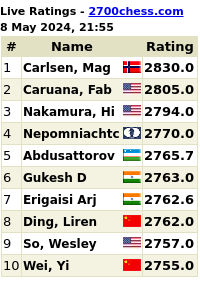


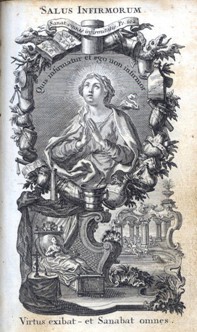












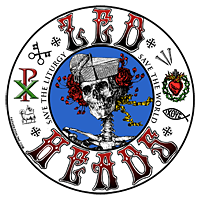






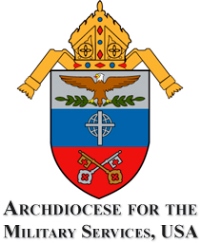

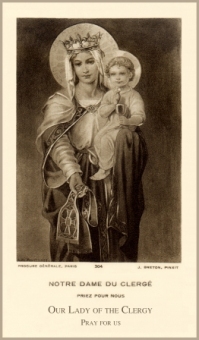

Hello, I am a member of the forum in catholic.org and I have seen this forum, I have to say, that this is very hopeful these things and I hope that the liturgy, a pillar in the church would be powered.
Greetings and congratulations for the blog.
PS: My name in the forum is RMT.
Since Benedict has spoken of his intent not to write as much as his predecessor, what do you think the prospect would be of, rather than simply announcing a liberalization of the 1962 Missal, the Holy Father might celebrate Mass publicly according to the 1962 Missal and explain, or have it explained that any other priest is free to do as he has done? In my opinion, that might be more powerful than simply issuing a document that might later be torn to shreds by canonists… or shall I say, bad canonists :)
Doing both would be far more effective.
And, to make the statement as powerful as the act, it should take the form of an IF-THEN statement, as in
IF any bishop should … THEN be him anathema.
I can’t wait. :)
Where is the defense of “for many” in Ratzinger’s writings found? I’ve been looking for more ammo on this topic.
Perhaps some people looking in here would be interested in Amy Welborn’s thread
http://amywelborn.typepad.com/openbook/2006/04/benedict_better.html#comments
which she started with a quote from Father Z here, and as of this moment has engendered 64 comments.
Where is the defense of “for many” in Ratzinger’s writings found? I’ve been looking for more ammo on this topic.
For instance, on pages 37-38 of God Is Near Us: The Eucharist, The Heart of Life (Ignatius Press, 2003):
“The fact that in Hebrew the expression ‘many’ would mean the same thing as ‘all’ is not relevant to the question under consideration inasmuch as it is a question of translating, not a Hebrew text here, but a Latin text (from the Roman Liturgy), which is directly related to a Greek text (the New Testament). The institution narratives in the New Testament are by no means simply a translation (still less, a mistaken translation) of Isaiah; rather, they constitute an independent source” (emphasis added).
In regard to the fact that “for many” is indisputably the correct English translation of the “pro multis” of the Latin liturgy, Cardinal Ratzinger is saying here that any argument (whether it’s correct or not) — that the Hebrew of the Bible could mean “for all” — is irrelevant to liturgical translation. Because the Latin liturgy are to be regarded not as a translation of the Bible, but an independent source on its own, which should be correctly translated into the vernacular.
Dear Father,
Interesting article. You have given much to ruminate. I am glad to have followed this link.
Now, I do have a question. Do you type this in Italian or Latin, and then a computer translates it into English? I ask for two reasons. First, I have seen some grammatical mistakes that I have difficulty calling “typos.” Second, I know you to be a well-lettered gentleman, so these seem very much out of character. Seeing “…group would is inclined to exaggerate …” four paragraphs from the bottom in your writing is bizarre.
Thank you for all you do. May you have a great Triduum and Eastertide!
I’m a Catholic who has been thinking about the Second Vatican Council and where it has taken the Churh after 40 years…
Pope Pius II, Execrabilis said,
“…any council called to make drastic change in the Church is beforehand decreed to be void and annulledâ€Â
Are errors present in Vatican II? Does it contradict the teachings of the Church?
On modernity:
“It is not fitting that the Church of God be changed according to the fluctuations of worldly necessity.” – Pope Pius VI, Quod Aliquantum, March 10, 1791
“…the Church… can and ought to be enriched by the development of human social life… so that she may… adjust it [the Constitution of the Church] more successfully to our times.” – Vatican II Pastoral Constitution on the Church in the Modern World, #44
“No man can serve two masters, for to please one amounts to contemning the other… It is a high crime indeed to withdraw allegiance from God in order to please men.” – Pope Leo XIII, Sappientiæ Christianæ, #6 & 7, Jan. 10, 1890
“Christians cannot yearn for anything more ardently than to serve the men of the modern world.” – Vatican II Pastoral Constitution on the Church in the Modern World, #93
On religious liberty:
“They do not fear to foster that erroneous opinion, especially fatal to the Catholic Church and to the salvation of souls… namely that liberty of conscience and of worship is a right proper to every man, and should be proclaimed and asserted by law in every correctly established societyâ€Â– Pope Pius IX, Quanta Cura, #3, Dec. 8, 1864
“The human person has the right to religious freedom… this right of the human person to religious freedom is to be recognized in the constitutional law whereby society is governed. Thus it is to become a civil right.” – Vatican II Declaration on Religious Freedom, #2
Judge a tree by its fruits (Matthew 7:15 – 20):
Mass attendance has plummeted 66% in France, 54% in Holland, 50% in Italy and 40% in the USA.
Infant baptisms are down 50%, adult conversions 75%, while divorce rates among Catholics, along with birth control, have reached shocking proportions.
Seminaries are being emptied (e.g. seminary enrolment in France declined by 83% from 1963 to 1973). And this is true even in the USA and many other nations all around the world. Even entry to the religious life is on the decline.
(Source: New Jersey Catholic News, Summer)
Converts to the faith are down 70%! Put another way: for every ten people who found conversion to the faith attractive prior to Vatican II, only three do today. But even that is not the end of this miserable story, because many converts these days don’t in actual fact become Catholics – i.e. Charismatic Catholics.
“…the Church finds herself in a time of uncertainty, of self-criticism, and even self-destruction. It is like an internal upheaval… as if the Church were striking blows to herself†– Pope Paul VI lamented the disastrous results of Vatican II
What have these reforms created? Did it really create a renewal in the church?
I love the Church dearly and hope you can provide some help.
Thank You!
Believe it or not, the Holy Father’s upcoming decision is going to have tremendous
impact far and wide, including the Far East.